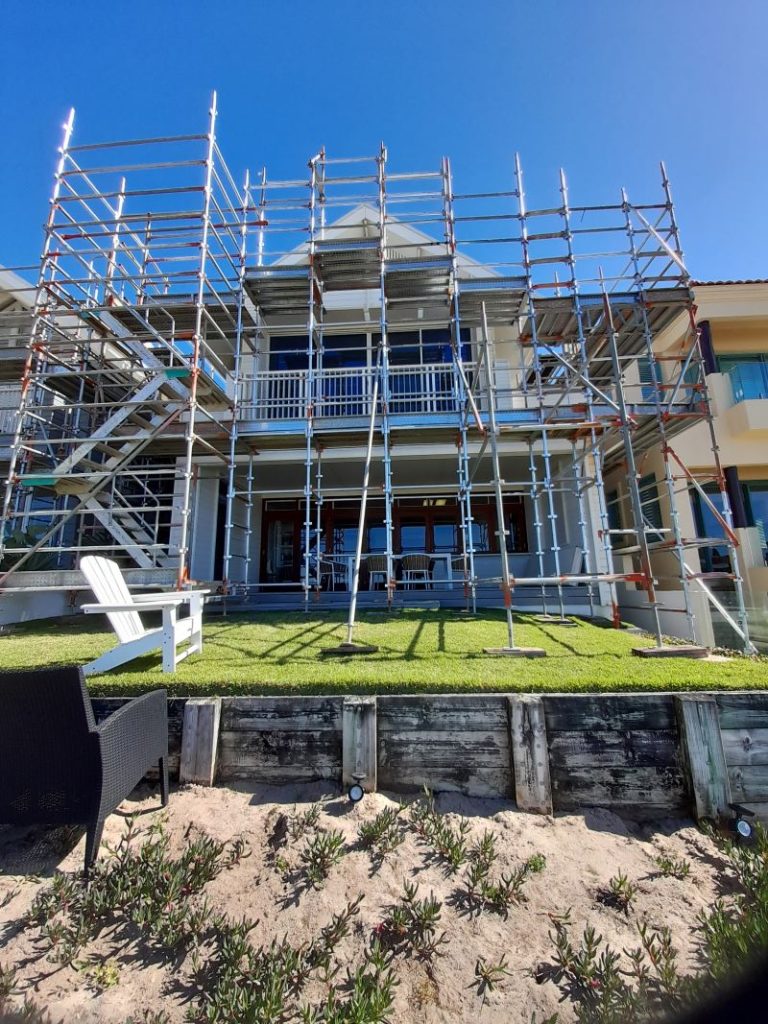Comprehensive Analysis: Aluminium vs. Steel Scaffolding for Optimal Construction Projects
Choosing the right scaffold for your construction or renovation project is crucial for ensuring both safety and operational efficiency. Two of the most popular materials utilized in scaffolding are aluminium scaffolding and steel scaffolding. Each material presents unique characteristics, advantages, and suitability for various project requirements. This detailed guide aims to provide an in-depth comparison of these two options, highlighting their features, benefits, and ideal applications to assist you in selecting the most appropriate scaffold for your specific construction needs.
When evaluating scaffold options, it's essential to understand the distinctive advantages of aluminium and steel scaffolding. This guide will thoroughly investigate these attributes, equipping you with the knowledge necessary to make an informed decision that aligns with the unique demands of your construction project.

Discover the Key Benefits of Aluminium Scaffolding for Your Construction Needs
Aluminium scaffolding is highly esteemed for its lightweight structure and exceptional ease of handling, making it a premier choice for projects that require frequent relocation and quick assembly. The components of aluminium scaffolding are significantly lighter compared to those made from steel, which greatly enhances transportation and maneuverability at the job site. This attribute is particularly advantageous for contractors who are working in confined spaces or need to reposition scaffolding materials regularly, ensuring a seamless workflow and boosted efficiency throughout the project.
Moreover, aluminium scaffolding is renowned for its impressive corrosion resistance. This quality renders it an excellent option for outdoor projects or environments with high humidity levels, guaranteeing that the scaffold maintains its structural integrity and aesthetic appeal over time. The corrosion-resistant features of aluminium scaffolding contribute to its long-term performance and reliability, vital for projects exposed to challenging weather conditions or moisture.
Setting up and dismantling aluminium scaffolds is typically a swift and straightforward process, as the components are designed for easy assembly. This efficiency can lead to substantial time savings on site, particularly for projects that operate under tight deadlines. By minimizing the time spent on setup, construction teams can dedicate more time to completing their tasks effectively and safely, ultimately enhancing overall productivity and project success.
Uncover the Exceptional Strength and Stability of Steel Scaffolding
Steel scaffolding is celebrated for its superior strength and significant load-bearing capacity, making it an exceptionally durable option for construction projects that require robust support. This material is specifically engineered to withstand substantial weight and endure challenging conditions, providing a secure platform for workers, even in demanding environments. Its rigidity and overall strength make it the preferred choice for projects that involve heavy machinery or large materials, ensuring safety and reliability at elevated heights.
The durability of steel scaffolding is a critical advantage, especially in extreme weather conditions or high-traffic areas where the scaffold may face heavy usage. Unlike lighter materials, steel scaffolding is built to resist bending or deformation, ensuring a secure working environment for personnel. This reliability fosters confidence among construction teams, allowing them to work effectively and safely without concerns about structural integrity.
Furthermore, steel scaffolding is well-regarded for its cost-effective longevity. Although the initial investment may be higher compared to aluminium, the durability and extended lifespan of steel scaffolding make it a financially sound choice in the long run. This material can endure repeated use, resulting in fewer replacements or maintenance needs, thus providing significant savings over time.
When determining whether to opt for aluminium or steel scaffolding, it is essential to evaluate the unique requirements of your specific project. Factors such as material weight, scaffold height and size, and the environmental conditions at the job site will significantly influence your final decision.
Engaging with your scaffold hire company can offer invaluable insights, assisting you in selecting the most suitable option for your project's distinct demands. For more information on when scaffolding is necessary and the types of projects that may require it, explore our article on when to hire scaffolding.
Crucial Factors to Consider When Choosing the Right Scaffold Material
Several important factors must be taken into account when evaluating the choice between aluminium and steel scaffolding. A thorough understanding of each scaffold material's strength and durability, weight and portability, and cost and affordability will empower you to make an informed decision that aligns with your project's specific needs and constraints.
Evaluating the Strength and Durability of Different Scaffold Materials
Both aluminium and steel scaffolds are recognized for their strength and durability, yet they exhibit distinct qualities that may influence your choice. Steel scaffolding is generally considered to possess superior strength and load-bearing capacity compared to aluminium scaffolding. The robust composition of steel enables it to withstand heavy loads and ensure stability in challenging construction scenarios, making it a reliable choice for demanding projects.
Conversely, while aluminium scaffolds are strong and durable, they may not support exceptionally heavy loads as effectively as steel. Therefore, it is imperative to carefully assess your project's weight requirements to determine which scaffold material best meets your operational needs and safety standards, ensuring that you make the most appropriate choice for your construction tasks.
Investigating Weight and Portability Features of Scaffolding Options
Aluminium scaffolds have a notable advantage in terms of weight and portability. Their lightweight nature allows for significantly easier handling and transportation compared to their heavier steel counterparts. This feature is particularly beneficial in smaller-scale projects or scenarios where scaffolding requires frequent repositioning, as it minimizes physical strain on workers and enhances overall productivity on the job site.
While steel scaffolds may be heavier, they still offer a degree of portability; however, they typically require more effort and manpower for transportation. Understanding the relevant weight and portability aspects of your project is crucial for ensuring efficient and safe scaffold use throughout your operations, ultimately leading to improved job site dynamics and worker satisfaction.
Unveil the Unique Advantages of Aluminium Scaffolding
Upon evaluating various scaffold materials, aluminium scaffolding reveals a range of distinctive advantages that make it a preferred choice for numerous construction and renovation projects.
Experience the Lightweight Design of Aluminium Scaffolding for Effortless Handling
A standout advantage of aluminium scaffolding is its lightweight design. Compared to steel scaffolding, aluminium is significantly lighter, which greatly enhances its manageability and transportability. This characteristic not only accelerates the assembly and disassembly process but also contributes to a more efficient workflow, ultimately shortening the overall project timeline. Additionally, the ease of handling significantly boosts worker productivity, reducing the risk of fatigue-related accidents and improving overall safety on site, thus creating a more conducive working environment.
Exceptional Corrosion Resistance Ensures Long-lasting Performance
Aluminium scaffolding showcases remarkable corrosion resistance, making it an excellent choice for a variety of environmental conditions. Unlike steel, which is vulnerable to rust and degradation, aluminium's natural resistance to corrosion guarantees that it maintains its structural integrity even when subjected to moisture or outdoor elements. This feature is particularly advantageous for projects conducted in damp or humid conditions, ensuring that the scaffold remains safe and effective throughout its usage, thus providing peace of mind to construction teams.
Streamlined Assembly and Disassembly Processes Enhance Efficiency
Another significant benefit of aluminium scaffolding lies in its quick assembly and disassembly capabilities. The lightweight components, user-friendly connectors, and locking mechanisms facilitate an efficient setup process. This efficiency is especially valuable in time-sensitive projects or scenarios where scaffolding needs to be relocated frequently. The rapid assembly and disassembly associated with aluminium scaffolding not only saves time but also helps to reduce overall labour costs, providing an economic advantage for project managers striving to optimize their resources.

Explore the Unmatched Advantages of Steel Scaffolding for Construction Excellence
Steel scaffolding offers numerous benefits that make it a top choice among contractors and builders when selecting the optimal scaffold for construction projects.
Discover Unrivaled Strength and Load Capacity with Steel Scaffolding
One of the primary advantages of steel scaffolding is its unparalleled strength and load capacity. Steel is renowned for its exceptional durability and ability to support substantial loads, making it ideal for projects where scaffolding must bear significant weights. Steel scaffold systems are meticulously designed to provide workers with a stable and secure platform, ensuring their safety while operating at elevated heights and in challenging environments where risks are often higher.
Remarkable Durability Ensures Performance in Extreme Environmental Conditions
Steel scaffolding is resilient against various environmental factors, making it suitable for harsh conditions. It can withstand adverse weather elements, including high winds, heavy rain, and extreme temperature fluctuations. This durability guarantees that the scaffold remains stable and secure, thus establishing a safe working environment for construction teams. Whether addressing projects such as gutter replacements or other tasks that necessitate scaffolding in demanding conditions, steel scaffolding is engineered to endure the rigors of the job, fostering confidence among workers.
Cost-Effective Longevity: Maximizing Your Investment with Steel Scaffolding
Steel scaffolding is widely recognized for its exceptional longevity and overall cost-effectiveness. Its inherent durability ensures that the scaffold can withstand numerous construction projects over extended periods without significant degradation. Unlike other materials, steel scaffolding does not degrade quickly, thereby reducing the need for frequent replacements or repairs.
To determine the most suitable scaffold material for your specific project, it is essential to assess your needs carefully, consult with industry professionals, and consider safety standards alongside budgetary constraints to make a well-informed choice.
Essential Steps for Selecting the Ideal Scaffold for Your Construction Project
Choosing the right scaffold for your project requires a meticulous assessment of your unique needs. By thoroughly evaluating your project requirements, consulting with professionals, and considering safety and budget constraints, you can make a well-informed decision that aligns with your operational goals and enhances overall project efficiency.
Comprehensively Evaluating Your Project Requirements for Effective Scaffold Selection
Begin by assessing the specifics of your project and the tasks that necessitate scaffold support. Key considerations include the height and configuration of the structure, the anticipated duration of the project, and any specialized requirements that may arise during the planning process.
For instance, scaffolding for an apartment complex will have distinct specifications compared to scaffolding or guard rails for gutter replacement. By thoroughly understanding your project needs, you can determine the appropriate type and configuration of scaffold that will best suit your operational objectives, thereby ensuring on-site safety and efficiency throughout the project lifecycle.
The Importance of Engaging Professionals for Informed Scaffold Selection
Collaborating with experts, such as Cando Scaffolding, is highly recommended when navigating the complexities of scaffold selection. Our extensive industry experience ensures you receive invaluable guidance, helping you meet safety standards and regulatory requirements throughout your project.
Contact us today or request a quote to initiate the process of selecting the ideal scaffold for your upcoming project.
The post-Scaffold Choices: Aluminium vs Steel for Your Project appeared first on https://writebuff.com/.
The Article Aluminium vs. Steel: Choosing the Best Scaffold for Your Project Was Found On https://limitsofstrategy.com
Comments are closed


It’s really interesting to see such a detailed breakdown of aluminium versus steel scaffolding. I’ve been involved in a few renovation projects myself, and the scaffolding choice can be a bit overwhelming with so many factors at play. One aspect that particularly resonates with me is the weight difference between the two materials, which can significantly impact mobility on site. I remember a time when we opted for aluminium scaffolding because it was so much easier to transport around the site, especially when we had limited space. It was almost a game-changer in terms of efficiency—less time moving materials meant more time focusing on the actual work!